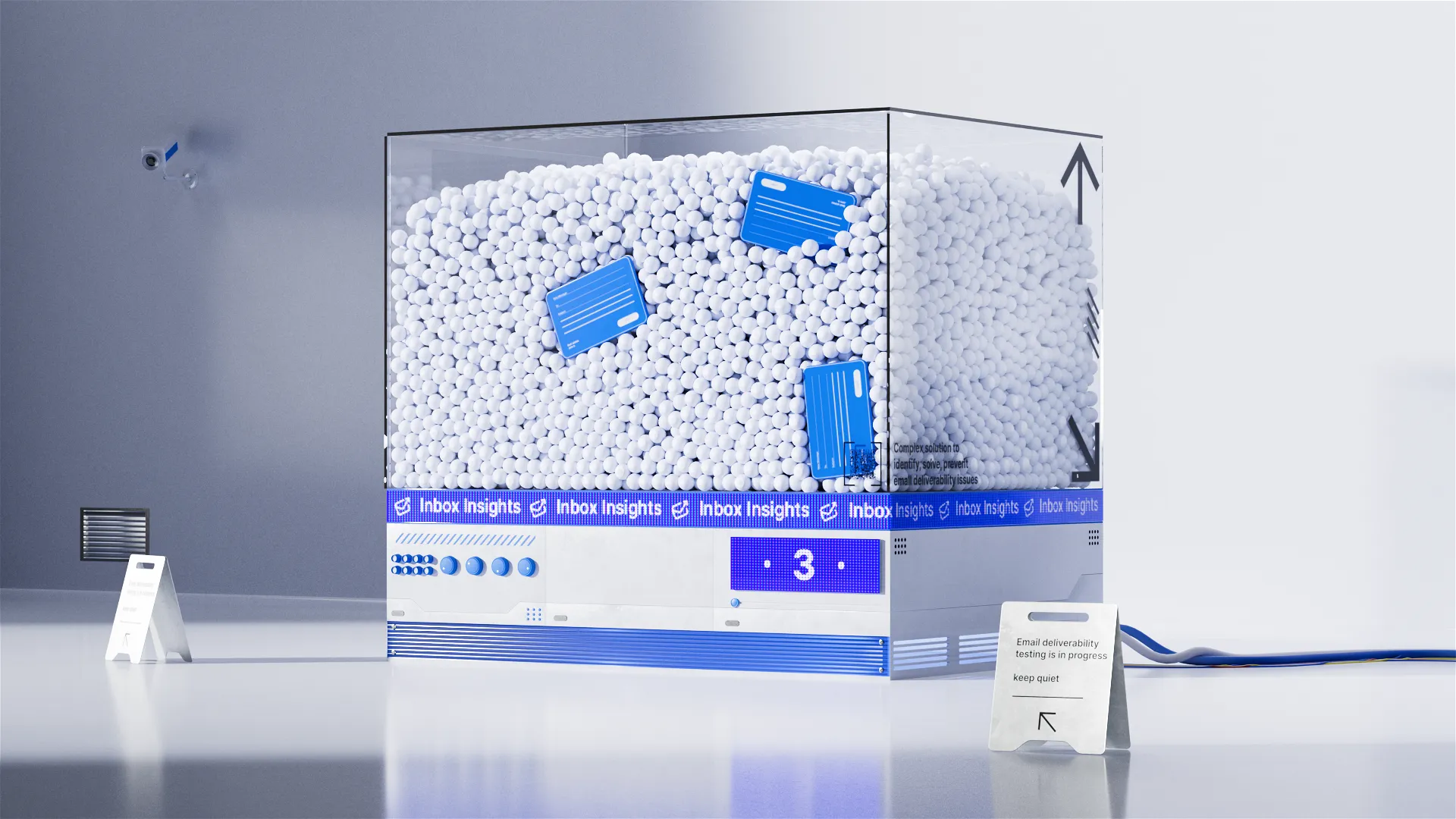Most free email deliverability checkers offer basic “spam folder” or “inbox” verdicts, generalized for all email service providers (ESPs). The result—you wonder what the reasons are for spam folder placement, where to start, and whether the test results are the same for Gmail, Outlook, or any other ESP.
Inbox Insights is different. It's a game-changer for email deliverability testing that provides crystal clear insights into why your emails landed in spam.
In this article, we’ll guide you through the testing process in detail so you can see how it works in practice, how to benefit the most from the tool, and, most importantly, why you should give it a try.
Introducing Inbox Insights: Key Features
What makes us proud is that, with just a couple of minutes and a few clicks, this tool provides comprehensive data on where your emails are landing, the exact spam reasons, and even advice on how to improve email deliverability.
Long story short, what sets Inbox Insights apart is that we don’t just give you reports. We pinpoint exactly why emails land in spam, providing clear fixes to get them delivered.
-
Actionable Insights: Using other tools, you can see generalized inbox and spam folder placement scores. We provide specific details on the score within every ESP, specify why your email might be getting flagged as spam, and even give you some best practices on fixing that, so you know where to start.
-
Blacklisting Test: Inbox Insights runs through 30+ blacklists to see whether your domain or IP is listed or not. Also, we give you the blacklist delisting instructions and can help you with delisting per additional request.
-
DNS Settings Check: In the domain health tab, you can get a detailed overview of your domain and review the state of your DNS records. Also, you get recommendations from deliverability experts on how to resolve the setup issue and get suggested correct DNS records.
Now, let’s see how it works, step by step.
How To Test Email Deliverability: 5 Steps
Everything is simple.
Step 1: Connect your mailbox
Inbox Insights testing is automated, so all you need to do to start it is add your mailbox and template. First, we start with a mailbox.
Go to the ‘Mailboxes’ page and click the ‘Add mailbox’ button.
When connecting your mailbox, you can either select from suggested email server providers or connect via SMTP with any other provider.
Then click on the "Add Mailbox" button, and your mailbox will be added to Inbox Insight, allowing you to use it for testing.
Step 2: Add your email template
After you confirm and add your mailbox, you can select the email template you are using for real email outreach, either in HTML format or plain text.
Choose one of the available content languages, insert your content, review and fix detected spam-triggering words with the enhanced template editor, and then click 'Create' to save your template.
Once you've selected your template and language, the enhanced Template Editor helps identify and fix any words that might trigger spam filters. This ensures your emails are optimized for delivery before you even send them.
Step 3: Start your email deliverability test
After setting up, initiating the test is just a click away. In merely two minutes, Inbox Insights evaluates your email's deliverability, offering a quick, precise analysis that saves you time and boosts your campaign's effectiveness. Click on ‘Start Test’ and wait for the magic to happen.
Step 3: Access the test results
The results of your deliverability test are easily accessible through the Home tab, where Inbox Insights provides a detailed report.
Inbox Insights excels by offering detailed statistics for each major email service provider, like Gmail and Outlook, allowing you to see exactly where your emails are landing. It only provides detailed domain health insights and IP, including DNS record reviews and expert recommendations for resolving any setup issues.
IP and Domain Insights
You can view detailed information about your sending IPs—whether they are shared or dedicated—and check your Sender Score. Plus, you can see if your IPs are on any blacklists and follow the provided instructions for getting them delisted. Inbox Insights scans over 30 blacklists to ensure comprehensive monitoring.
Step 5: Share test results (if needed)
Once you've got your report, sharing it is straightforward—even with individuals who aren't signed up for Inbox Insights. This makes collaborating on email deliverability strategies with your team or clients seamless.
Extra Recommended Step: Repeat Email Testing 🙂
Consistency is key. Consistent analysis with Inbox Insights helps you identify and fix potential problems before they impact your outreach.
Regularly running these spam tests with Inbox Insights ensures your email placement remains optimal across major email providers and that issues like DNS mishaps and blacklists are promptly addressed.
Remember, consistent testing with Inbox Insights is key to maintaining optimal email deliverability. By regularly analyzing your campaigns, you can identify and address potential issues before they affect your outreach efforts.
From Spam Risks to Predictable Outreach
Unpredictable email placement is a campaign killer. Inbox Insights ensures optimal delivery across major ESPs, while proactively addressing issues like DNS mishaps and blacklists.
With Inbox Insights, you can say goodbye to the frustration of uncertain email placements and hello to the confidence that comes with actionable, precise deliverability insights.
And, of course, the best way to explore the tool is to test it. Sign up in a few clicks to get started and get 2 free tests per month and see how your email outreach performs.
